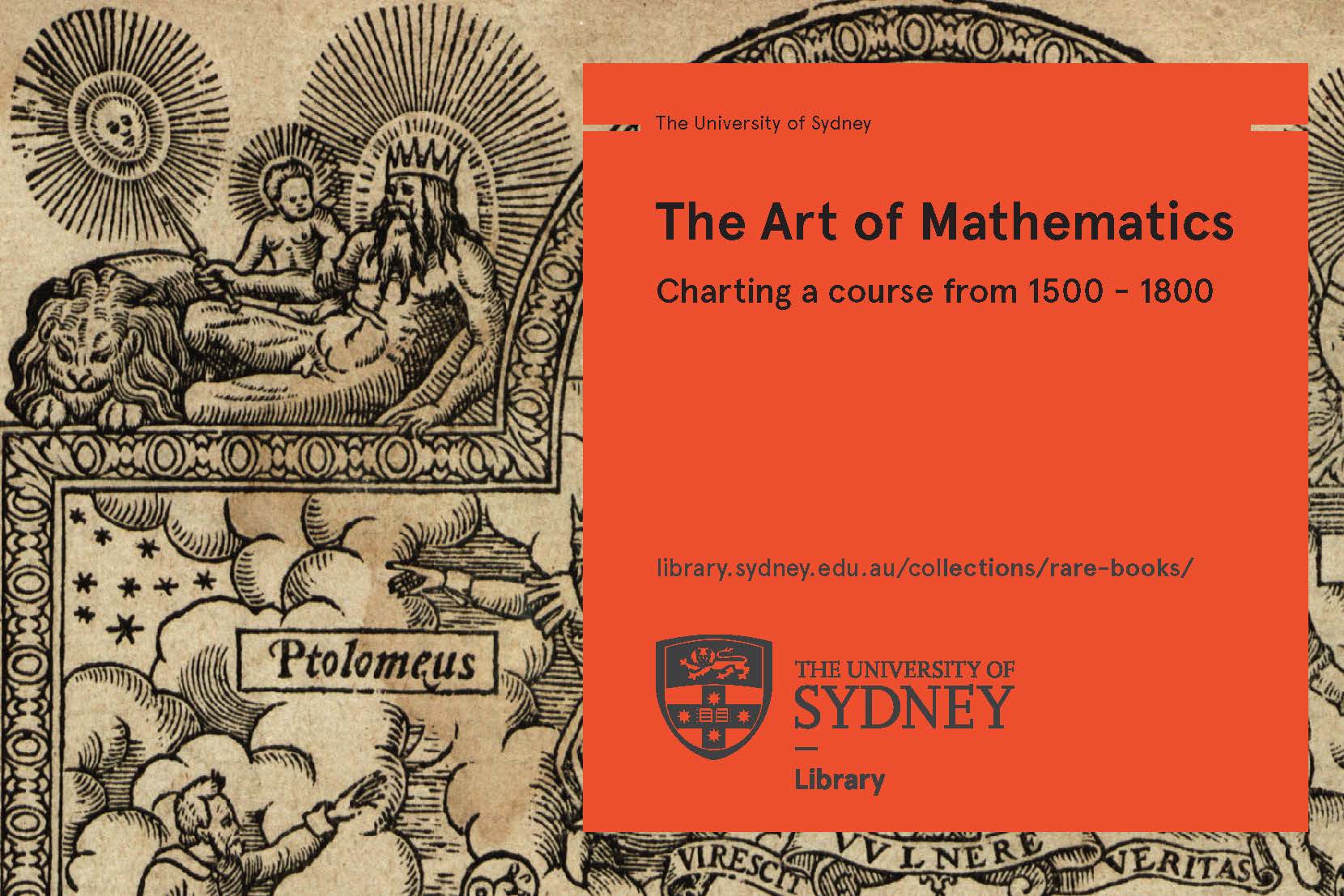The Art of Mathematics: Charting a Course from 1500-1800
An exhibition for Fisher Library's Rare Books and Special Collections
This exhibition begins with a lavishly engraved edition of Euclid’s Elements. The Elements of Euclid, an important work of ancient mathematics largely lost to Europe in the Middle Ages, re-emerged in the late 15th century as a result of careful philological, philosophical and mathematical attention. Those tasked with restoring Euclid variously described their project as one of revival and restitution. Their ambition was to return Euclid to its place as a cornerstone of mathematical learning. But the task of these individual restauratores did not end there. While the renaissance of mathematical learning begins with Euclid, it extends to ancient works by Ptolemy and Apollonius, and crystallises in the mathematical innovations of early modern thinkers such as Galileo, Descartes, and Barrow. In this way, this exhibition charts a course through the early modern mathematical and non-mathematical disciplines to examine the influence of Euclid, with which this exhibition begins. Sciences such as astronomy, architecture, hydrography, music, and navigation, no longer understood in terms of mathematical achievement, owe much to the re-emergence of Euclid in the renaissance. The diagrams, drawings and engraved frontispieces that accompany the mathematical works displayed in this exhibition illustrate this narrative of mathematical achievement and, represent the central place of mathematical knowledge in European culture in the early modern era.
More information about the exhibition can be found here.
This exhibition was curated by Dr Laura Kotevska. Assistance was provided by student volunteer Ben Campbell and Rare Books and Special Collections librarians Emily Kang and Fiona Berry. The Art of Mathematics was made possible by the generous support of the Nicholas Anthony Aroney Research Fund.
Exhibition Events and Public Lectures
In conjunction with the exhibition, I have delivered a number of public-facing talks, including a curatorial lecture and Rare Bites Seminar.
In the talk titled “The Renaissance of Euclid’s Elements” (left) I use the University of Sydney’s copy of the Preclarissimus liber elementorum Euclidis of 1482 to describe the re-emergence of Euclid’s Elements in the Renaissance after its long disappearance from European culture in the Middle Ages. What emerges is that the restitution of Euclid in 15th century Europe owes a great deal to the Strozzi and their library, from which the University of Sydney edition of the Preclarissimus liber elementorum Euclidis is drawn. Interwoven between tales of the 15th century Strozzis of Florence and the only recorded instance of Isaac Newton having laughed are scarecrows, rivalling houses of Florentine nobility, egotistical mathematicians, Jesuit voyages to China, searches for divinity, and chamber pots. Without these, no discussion of Euclid’s re-emergence would be complete.
